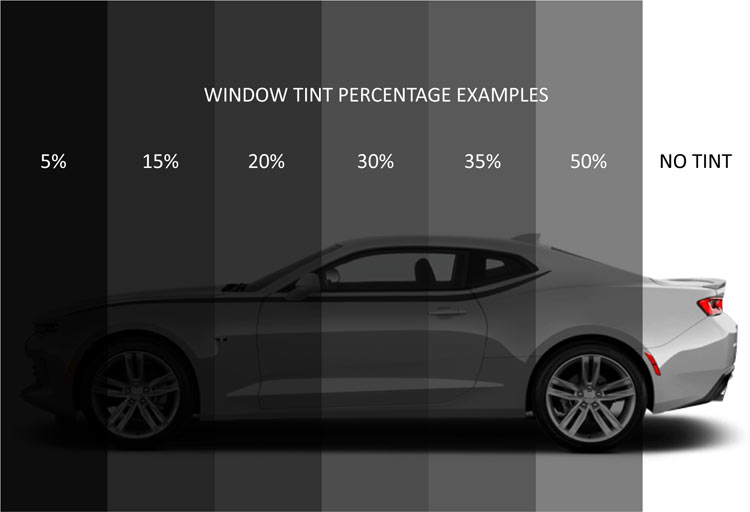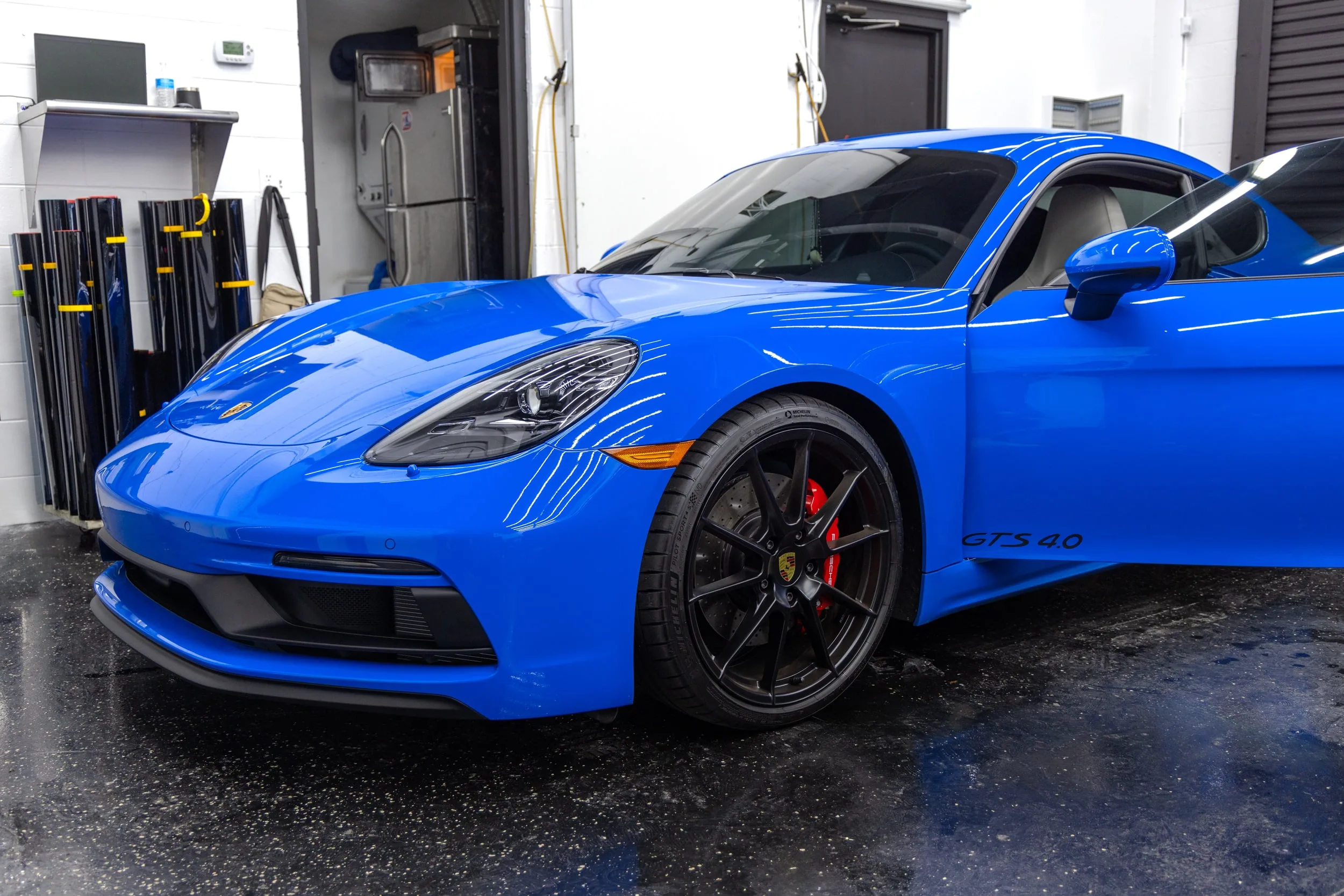A Comprehensive Overview to Understanding Vehicle Home Window Tint and Its Benefits
Automobile window tinting serves more than just a visual objective for automobiles. It provides numerous kinds, each with unique attributes and benefits. Comprehending these options, along with lawful guidelines and upkeep pointers, is important for any lorry owner. The advantages might considerably boost driving convenience and car durability. As one explores the nuances of home window tinting, the inquiry develops: what kind of color is best matched for private demands?
Comprehending Automobile Home Window Tint: What It Is and Exactly how It Functions
Vehicle window color works as a safety obstacle that boosts lorry visual appeals while providing useful benefits. This thin movie is used to the interior surface of car windows, reducing glow and blocking unsafe ultraviolet (UV) rays from the sunlight. By filtering sunshine, vehicle home window tint assists to control the indoor temperature level of the car, resulting in increased comfort for travelers and reduced dependence on air conditioning.Additionally, it secures the lorry's inside from fading, preserving both upholstery and control panel materials. The tint can also boost privacy, making it harder for outsiders to see inside the automobile. Moreover, particular sorts of window tint can increase security; in the occasion of a mishap, the film assists hold destroyed glass together, lowering the danger of injury from flying shards. Generally, vehicle home window color offers both aesthetic and practical objectives, making it a prominent selection amongst automobile owners.
Sorts Of Home Window Tint: A Review of Options
When considering window color alternatives, several kinds are offered, each with distinctive characteristics. Dyed, metalized, and ceramic window colors offer differing degrees of warmth denial, UV protection, and aesthetic charm. Understanding these differences can assist car owners make notified options based upon their choices and demands.
Colored Home Window Color
Colored home window color stands for a preferred option among automobile owners seeking a budget-friendly and efficient means to improve their car's appearances and personal privacy. This type of color is created by placing a layer of color in between an adhesive layer and a protective finishing, resulting in a darkened appearance that lowers glow and enhances visual comfort. While dyed window tint effectively obstructs unsafe UV rays, it may not provide the same degree of warm denial as various other color kinds. In addition, its shade can discolor gradually, potentially diminishing its efficiency. In spite of these disadvantages, colored window tint stays popular for its cost-effectiveness and ability to offer a streamlined, fashionable want to numerous car models.
Metalized Home Window Tint
Metalized home window tint supplies a balance of design and capability, making it a preferred selection amongst cars and truck owners. This sort of tint incorporates metal fragments within the movie, boosting both aesthetic allure and warmth rejection. The reflective high quality of metalized tint assists to lower glare and enhance personal privacy, while likewise providing UV security, which safeguards the automobile's inside. Additionally, metalized home window color can enhance window toughness, possibly avoiding shattering during crashes. However, it is vital to keep in mind that the metal elements can disrupt electronic signals, such as general practitioner and mobile phone function. In general, metalized window tint gives an efficient service for those seeking a combination of sunlight, appearance, and durability protection for their automobiles.
Ceramic Window Tint
Ceramic window color stands for an innovative option in the spectrum of vehicle home window movies, supplying unique advantages over typical tints. Unlike dyed or metalized films, ceramic colors utilize sophisticated ceramic particles, which properly decline warm and UV rays without compromising exposure. This modern technology ensures that vehicles stay cooler, minimizing reliance on cooling and improving gas efficiency. In addition, ceramic window colors are much less likely to interfere with digital gadgets, such as GPS or mobile signals, making them a sensible selection for modern lorries. Furthermore, their longevity and scratch resistance add to a longer life expectancy contrasted to various other kinds of colors. On the whole, ceramic home window tint provides remarkable performance, comfort, and security, making it a recommended alternative for critical vehicle owners.
Advantages of Auto Home Window Color: Beyond Appearances
While lots of people associate vehicle home window color with boosted design, its benefits extend far past simple aesthetics. One considerable advantage is warm reduction; home window color can block up to 99% of hazardous UV rays, maintaining the interior colder and safeguarding upholstery from fading. This not just enhances convenience during heat but also decreases reliance on cooling, causing improved fuel efficiency.In addition, car window tint provides an included layer of personal privacy and security. Tinted home windows make it hard for outsiders to see inside the lorry, which can prevent burglary and protect belongings. Furthermore, many colors strengthen the glass, lowering the probability of smashing in the event of a mishap, therefore improving safety.In enhancement to these practical benefits, automobile home window tint can also add to glare decrease, improving presence for guests and drivers alike. This complex technique to comfort and security makes home window tint a valuable investment for lorry owners.
Lawful Considerations: Tinting Regulations by State
Before committing to auto home window tint, lorry proprietors must navigate a complex landscape of tinting regulations that vary by state. Each state has specific regulations controling the permitted degrees of color darkness and reflectivity for various home windows, including windshields, front side home windows, and back windows. These laws commonly consist of visible light transmission (VLT) percentages, which determine just how much light can pass through the tinted glass.Some states permit darker colors on rear windows while limiting front side and windscreen tints for security factors. In addition, certain states may call for a certificate from the manufacturer to verify compliance with tinting legislations. Going against these laws can lead to fines, compulsory elimination of the tint, or both. It is important for vehicle proprietors to research their state's laws thoroughly to guarantee legal compliance prior to mounting home window tint. This persistance can save time and money over time.
Selecting the Right Tint: Aspects to Consider
When choosing the appropriate window color for an automobile, several essential factors enter into play. Tint darkness levels, UV security ratings, and conformity with legal guidelines are essential considerations to assure both appearances and performance. Evaluating these elements will assist individuals make an educated choice that fulfills their demands and sticks to regional regulations.
Color Darkness Degrees
Selecting the proper tint darkness degree is necessary for achieving the wanted balance between visual appeals and functionality in auto window tinting. Various states have varying legal laws concerning color darkness, which can influence the option. Typically, colors are measured in portions, with lower percentages showing darker shades. Darker colors supply enhanced privacy and a sleek appearance however can lower visibility, particularly in the evening. Alternatively, lighter colors preserve an even more open feeling, making sure adequate exposure while still offering some warmth and glow decrease. When making a decision, individuals need to consider their driving practices, neighborhood regulations, and personal preferences. Eventually, the appropriate tint darkness degree improves the lorry's look while making certain security and compliance with lawful criteria.
UV Protection Ranking
Tint darkness levels play a considerable role in the total performance of auto window tinting, yet one more crucial variable to examine is the UV protection ranking of the picked color. This rating shows the percentage of damaging ultraviolet rays that the tint can obstruct. Top notch tints typically offer 99% or more UV protection, safeguarding passengers and the automobile's inside from sunlight damage. Davinci of Michigan. Extended direct exposure to UV rays can lead to skin issues and fading of upholstery, making a high UV defense ranking essential for health and long life. When picking window color, consumers ought to prioritize this ranking together with darkness levels to guarantee optimum comfort and security more info while driving. Understanding these factors help in making an educated choice when investing in auto home window tinting
Lawful Rules Compliance
Recognizing regional legal regulations is vital for anyone taking into consideration automobile window tinting. Each state or area has certain regulations governing the permitted levels of tint darkness and reflectivity for various home windows. These regulations commonly define the visible light transmission portion, determining just how much light can pass through the tinted glass. Non-compliance can result in penalties, necessary elimination of the tint, or problems during car assessments. Furthermore, some areas might have restrictions on using certain tinting materials, calling for customers to choose products that meet safety standards. It is vital for automobile proprietors to research their local laws extensively before picking window tint to guarantee conformity and avoid possible lawful issues.

Installation Refine: do it yourself vs. Specialist Solutions
How does one make a decision between a do it yourself setup and employing professional solutions for auto window tinting? The option typically hinges on budget plan, experience, and wanted outcomes. A do it yourself approach can be cost-effective, enabling individuals to save money on labor costs. It calls for a particular degree of skill and understanding about the tinting process. Those who are precise and person might discover success with do it yourself packages readily available in the market.Conversely, expert services use expertise and high-quality products, making certain a remarkable finish. Professionals usually ensure their job, offering satisfaction against possible problems such as peeling off or bubbling. Furthermore, they recognize with local regulations concerning tinting, which can be complicated for the average auto owner.Ultimately, the decision shows a balance between price, personal capacity, and the anticipated top quality of the tinting task. Each alternative has its advantages, and the very best choice depends on private conditions and choices.
Maintenance Tips: Maintaining Your Color in Leading Problem

Frequently Asked Concerns
Exactly How Long Does Home Window Color Commonly Last on an Automobile?
Window tint commonly lasts between 5 to ten years, relying on elements such as top quality, application, and environmental problems. Routine maintenance and correct treatment can expand its lifespan, making certain ideal efficiency and appearance in time.
Can Window Tinting Damages My Car's Original Glass?
Home window tinting, when used properly, does not harm an auto's initial glass. Nevertheless, inappropriate installation or low-quality products might result in problems like gurgling or peeling, potentially affecting the glass's integrity gradually.
Is Home Window Tinting Safe for All Types of Automobiles?
Window tinting is normally risk-free for many vehicles, gave the film conforms with regional guidelines and is properly used. Nevertheless, some customized automobiles may call for certain factors to consider, making it vital to consult specialists before installation.
Will Home Window Tinting Void My Auto Warranty?
The inquiry of whether home window tinting gaps an automobile guarantee typically depends on the manufacturer's policies. Generally, if the tint does not harm the vehicle, warranties generally stay intact. Nevertheless, consulting the supplier is advisable.
Can I Remove Window Tint Myself if Needed?
Removing home window color oneself is feasible, however it requires careful attention to stay clear of harming the glass. People ought to use ideal devices and methods to ensure an effective removal without leaving glue deposit or scratches behind. While dyed home window tint properly obstructs unsafe UV rays, it may not offer the same degree of warm being rejected as various other tint types. Ceramic window color represents an advanced choice in the spectrum of automobile home window movies, using distinctive benefits over conventional tints. Prior to committing to car window color, lorry owners must browse a complex landscape of tinting laws that vary by state. These policies frequently consist of noticeable light transmission (VLT) portions, which dictate just how much light can pass through the tinted glass.Some states allow darker colors on rear home windows while limiting front side and windscreen tints for safety factors. Tint darkness degrees play a significant duty in the total efficiency of vehicle home window tinting, however another important factor to evaluate is the UV security score of the selected color.